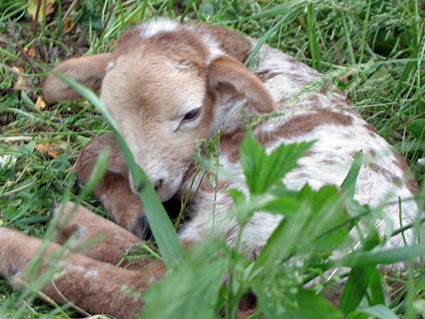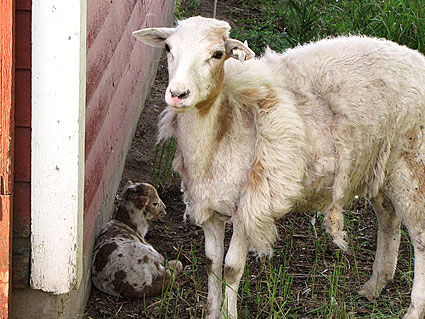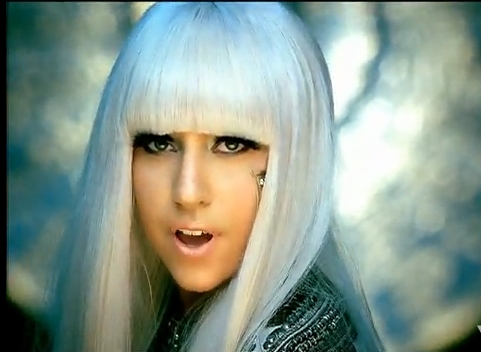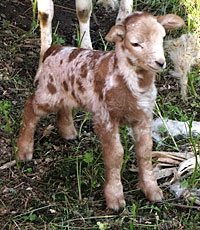 (Steph Larsen photos)Everyone knows the Boy Scouts’ motto: Be Prepared. While my immediate inclination is to ask “For what?”, it’s as good a command as any to live by.
(Steph Larsen photos)Everyone knows the Boy Scouts’ motto: Be Prepared. While my immediate inclination is to ask “For what?”, it’s as good a command as any to live by.
One at which I failed miserably last week.
I came home from work and went out to the sheep paddocks to make sure they looked healthy and had enough water and grass. When I got there, I was confronted by a complete surprise: a tiny newborn lamb, unsteady and bleating.
We bought our sheep from a gentleman whose sheep had accidentally been bred too early, so they came to us as five ewe-lamb pairs and three “open” (meaning not pregnant) ewes, supposedly to save us from any problems with lambing. We weren’t expecting any lambs until next spring.
When I recovered from my shock and surveyed the situation, I had a feeling things were not looking good. While the mother was nearby, it was clear she had no idea what to do. And that made two of us.
Ewe and I
After being born, lambs need to nurse from their mother as soon as possible. Not only does it start milk production in the mother, but the “colostrum,” or first milk, has important antibodies that keep the lamb from getting sick in the first few weeks. Our new lamb didn’t have the strength to stand and was being jostled around by the herd, and the mother didn’t realize that she had to keep still for her lamb to nurse.
 Watching that new lamb try to stand and get knocked over, I’d never felt more like a greenhorn in my life. My instinct was to rush into the paddock and sweep up the lamb so it didn’t get trampled. But indecision stopped me — what if taking the lamb away made the mother reject him? I didn’t have a bottle or any milk, and by the time I got some it might be too late. He needed to eat now, and I couldn’t hold the lamb and catch the mother by myself.
Watching that new lamb try to stand and get knocked over, I’d never felt more like a greenhorn in my life. My instinct was to rush into the paddock and sweep up the lamb so it didn’t get trampled. But indecision stopped me — what if taking the lamb away made the mother reject him? I didn’t have a bottle or any milk, and by the time I got some it might be too late. He needed to eat now, and I couldn’t hold the lamb and catch the mother by myself.
This must have been the lambing trouble from which we were supposed to be spared. Katahdin sheep are said to be good mothers, and this one clearly is. She had already licked her lamb clean and was sticking close by, but she was torn between being close to her herd and her baby. Plus there was no one to show the mother how to guide her lamb to her teat with her nose, how to stand just so.
Much to my relief, we eventually got the mother and lamb separated from the herd and eating, and for now the danger to the lamb seems past. That’s a mixed blessing too, because now that the lamb has more energy, he’s able to scoot away when I reach down to pick him up. I can tell he’s confused though; occasionally he’ll walk toward me, remembering that bottle I’ve been feeding him.
Just in case any of the other open ewes have more surprises for us, we’re buying the supplies we’ll need on hand when the lambs come — iodine for their umbilical cords, a “bander” for their boy-parts, bottles, and sheep-milk replacer in case they don’t get enough milk from their mother.
Choppy waters
The new lamb sure is very cute, which poses a potential problem for me. We plan to keep our ewe lambs to grow our flock, but the ram lambs will eventually become chops and burgers. As I fed him his bottle, I wondered, “Will I be able to eat this lamb when the time comes?”
 After being a vegetarian for many years, I started eating meat while in graduate school at the University of Wisconsin. I wanted to support farmers with whose sustainable methods I agreed, and many of them used livestock as a way to make a reasonable living. To this day I try to only eat meat if I know who raised it — which means at restaurants I almost always eat vegetarian.
After being a vegetarian for many years, I started eating meat while in graduate school at the University of Wisconsin. I wanted to support farmers with whose sustainable methods I agreed, and many of them used livestock as a way to make a reasonable living. To this day I try to only eat meat if I know who raised it — which means at restaurants I almost always eat vegetarian.
I’ve worked on farms where we raised meat, and I’ve had dinner at friends’ houses where we ate meat that had been raised there. But I don’t think I’ve ever met a live animal whose path to my plate was so direct.
This is the part of eating meat that most Americans choose not to ponder, with Grist readers being one of many obvious exceptions. When the topic of humane (or inhumane) animal treatment and slaughter comes up, the vast majority of folks will shrug and say, “I really don’t want to know.” I’ve been confronted with that exact conversation myself, and it frustrates me that people can be so complacent about practices that cause such harm to animals, people and the environment.
When the final day comes, I won’t be the one actually killing our lambs. We work hard to give them the best life we can, and I’m just not skilled enough to insure that their death be as painless as possible. I expect the fact that I’ve always known some of these lambs will end up as meat will make the process easier. Life and death are both omnipresent on a farm. The expectation of eventual death also reminds me to live in the moment with my sheep that much more. Knowing that today might be the last time I can easily catch my new lamb, I held him just a little longer than I had to before he scrambled away to his mother’s side.
Yesterday as I sat with a tasty beverage in hand, laughing as the sheep frolicked and played, I thought about how I like having livestock. Animals are interesting to watch, and they add depth to a farm as well as provide a host of services including pasture fertilization and mowing.
But livestock aren’t pets. They are on a farm because they serve a purpose. If I can’t raise an animal to eat, then I shouldn’t keep sheep whose purpose is to become meat. Furthermore, if I can’t eat meat that came from an animal I know was loved and respected, that had a good life playing in the sun and eating grass, then I should go back to being vegetarian.



